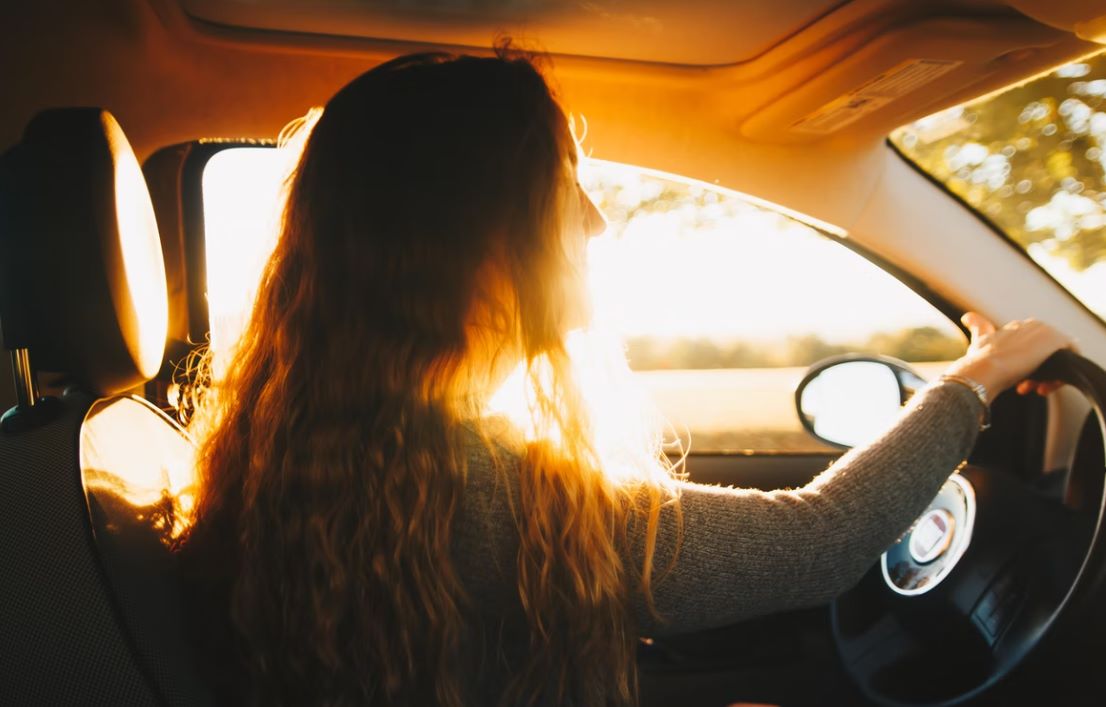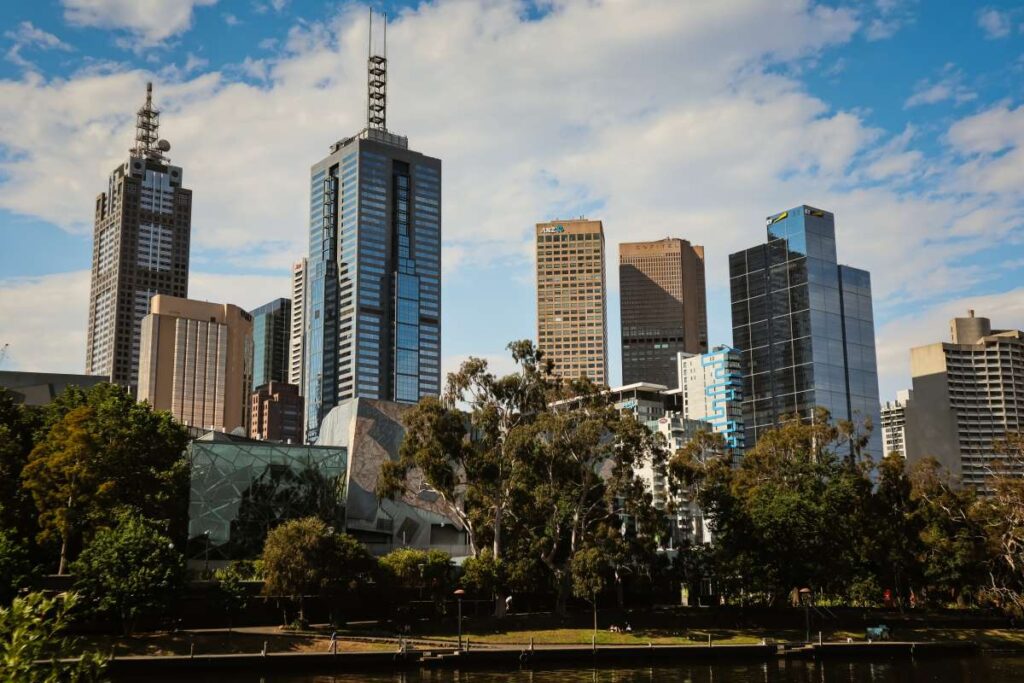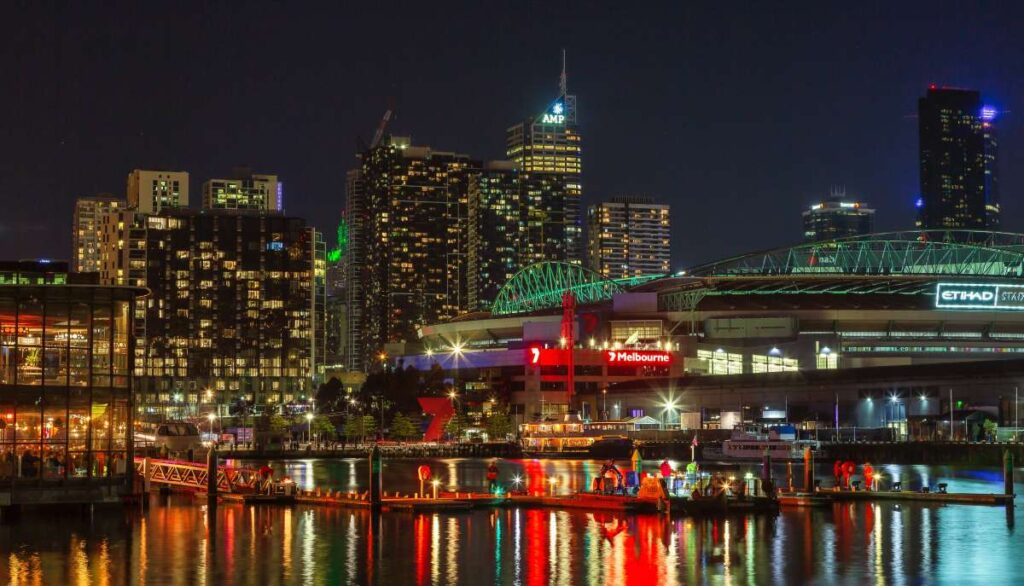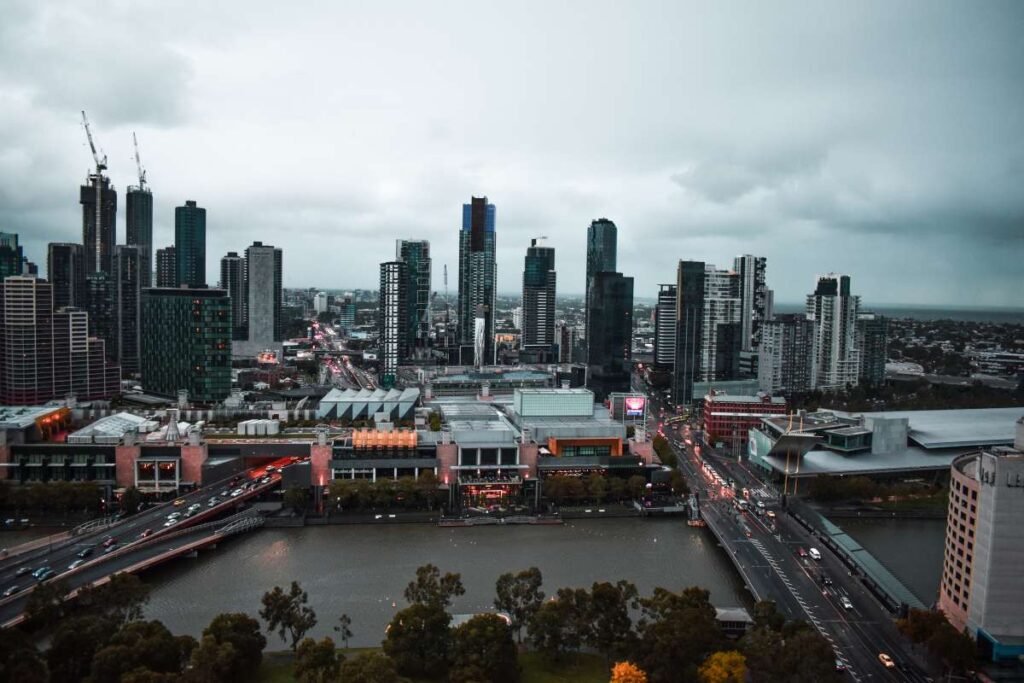Our vast and well-maintained road network ensures driving is a popular mode of transport throughout Victoria.
In Australia, motorists must stick to the left side of the road at all times. You and your loved ones can feel safe and secure knowing that Victoria's police force strictly enforces our driving laws.
FAQs About Melbourne Drivers Licence
The number of driving hours required vary in different states and territories. Foreign nationals holding a current licence from a recognised country or an experienced driver recognised country can convert their overseas licence to an Australian driver's licence usually within three months after arriving in Australia.
You will require this licence if you intend to drive a motor vehicle in Victoria. A full driver's licence is granted through various stages of competency known as a learner and provisional licences. A motor vehicle includes a car, motorcycle, boat or marine vessel.
Compulsory 120 hours of logged supervised learner driving experience. A minimum 12-month learner permit period. A challenging on-road driving test. a two-stage probationary licence - P1 (minimum one year) and P2 (minimum three years)
In NSW, once a driver becomes a permanent resident, you should obtain a local licence generally within three months.
The number of driving hours required vary in different states and territories. Foreign nationals holding a current licence from a recognised country or an experienced driver recognised country can convert their overseas licence to an Australian driver's licence usually within three months after arriving in Australia.
Is a Driver's License Necessary?
Any Victoria resident who wants to operate a motor vehicle on public roads must first obtain a driver's licence. Nonetheless, there are a few exemptions for foreigners and locals:
Persons Staying Here Only Temporarily
A valid driver's licence from another state is acceptable in Victoria for visitors. There is still the requirement of a valid International Driver's Permit or foreign licence.
People Who Will Be Living Here Forever
Permanent visa holders can drive in Australia for the first six months of their stay with either their foreign driver licence (if written in English or accompanied by an English translation) or an international permit (or when your visa was issued).
There is a six-month grace period before you require a Victorian driver's licence if you want to keep driving in Victoria.
The Benefits of Obtaining a Driver's License
For most young individuals, earning a driver's licence isn't a priority.
Teens are less likely to get behind the wheel for a variety of reasons in the United States, Canada, the United Kingdom, and Australia, according to recent data.
Since many people now choose to spend their time and money elsewhere, car ownership has fallen out of favour among many individuals, especially among younger generations.
As for why it should be the case, consider this.
Since leaving home is still a distant idea for many millennials, the age-old "Mum and Dad's Taxi Service" is still very much in demand.
If that doesn't work, there are probably a couple Ubers in the region that can be at the end of your driveway in less than five minutes.
When compared to the cost of a home, the cost of a car is generally cited as the second largest investment most of us will make (and weekly brunch dates are third). Driving is a skill that is useful in many contexts, so learning to do so is a worthwhile endeavour.
If you and your friends are planning a night out on the town, having at least one licenced member of your group is invaluable.
Of course, if you don't have access to public transportation or you reside in a rural area, you probably already have a driver's licence.
In contrast, if you haven't had any need to own or operate a vehicle before now, you might wonder why you should now.
No matter your excuse, getting a driver's licence is an important life skill that everyone should try to acquire.
The Melbourne License Application Process
Auto Registration
All cars in the state of Victoria must be registered with VicRoads. Vehicle classification and the location of the registered driver are two criteria that go into establishing the cost of registering a vehicle.
A vehicle's registration must be renewed annually, and there are several options for doing so.
Vehicle registration fees help support the Transport Accident Commission (TAC). People harmed in transportation accidents can get help from this (but does not cover damage to cars).
Roadworthiness
A Certificate of Roadworthiness is required in addition to car registration in Victoria. Only a qualified vehicle tester is authorised to provide a Certificate of Roadworthiness, which is necessary for selling or using a car on public roads.
Cars that aren't roadworthy pose a threat to the safety of drivers and others on the road.
Automotive Coverage
Having auto insurance can be a great relief if you ever get into an accident or have any damage done to your automobile. Fortunately, Melbourne is home to a plethora of auto insurance providers who all provide reasonable premiums.
Finding the right auto insurance policy means picking the coverage that fits your needs the best.
Directional Aids, Such As Maps and Phone Books
Navigating unfamiliar territory is now a breeze with the help of in-car navigation systems or handheld GPS gadgets that can be used anywhere. To get where you're going, though, you can use any of several free internet street maps and directions:
Melway, a popular street directory, covers not just Melbourne, but also its suburbs and a sizable portion of country Victoria. There is an electronic and a printed version available for purchase.
Pay Bridges
There are tolls on several routes in Melbourne, such as the CityLink and Eastlink motorways. You can either sign up for an account and get a remote monitoring device (called an eTag) to attach to your vehicle, or you can pay the tolls each time you use the toll road.
You can drive through the tollway without stopping to pay because we don't have any toll gates.
Stay above the minimum level required or prepay for your expenses to prevent any overdraft charges. In some cases, there may be monetary fines for noncompliance.
Towing and Recovery
In the event of a car breakdown in Melbourne, you can get help from a roadside service. RACV is a popular choice for roadside assistance in Melbourne, however there are a number of insurers who also offer this service.
When looking into auto insurance plans, make sure to ask about optional roadside assistance coverage.
 Tips On
Tips On
The Ultimate Guide to Passing Your License Test
Do not take advice from your parents.
Most of what your parents say, but not everything they say, is probably good advice, unless one of them is a driving instructor*.
The introduction of logbooks to keep track of learner hours does not alter the fact that impressionable teenagers are being taught by someone who is not qualified to do so.
You'll only learn as much as the person teaches you; if your parents aren't the best drivers, for example, it won't do you much good if they pass their bad habits on to you.
Furthermore, there may be tensions in the parent-child connection. Putting the two of you in a high-pressure situation, like learning to drive together, is not a good sign.
The two extremes can be reconciled by having your parents show you the basics of driving in the family car (which pedals do what, how the wipers work, etc.) and then taking you to the carpark on a Sunday afternoon before you hit the streets.
It's important to find a qualified driving instructor.
The easiest approach to ensure that you learn safe driving practises from the start is to start driving with an instructor as soon as you acquire your Ls. Plus, they'll help you remain cool under pressure even if your world is collapsing around you.
The instructor's vehicle will also have a second set of controls installed in case the driver gets carried away.
They will also give you fair criticism, which you must consider since they are not your parents and you cannot tell them to leave.
And they'll show you how to get your driver's licence in the simplest and safest possible way. If you find that your personality clashes with your instructor, don't be afraid to try someone else.
Exercise Your Manual Driving Skills
It's still worth a go even if the prospect of three pedals under your stylish vegan slip-on is more alarming than anything else. It will become automatic and a permanent part of your toolkit once you've mastered it.
Vehicles with manual transmissions are more plentiful and affordable on the used automobile market since they are less desirable. If you are the only person at a party who can drive the lone manual car home, you will become an instant hero.
But if you take the test in an automatic, you'll be stuck with it for at least a year (depending on which Aussie state you live in). Learn to drive stick and challenge yourselves, fellas.
Take a Driver's Education Course
Taking a defensive driving course will give you the practise and self-assurance you need on the road. You'll learn how to handle your vehicle in both rainy and dry circumstances, practise an emergency stop in preparation for when you actually need one, and improve as a driver overall.
Councils, governments, and insurance companies frequently subsidise beginner driving classes, bringing the cost down to as little as $150 for a full day's instruction.
They are accessible to people of varying ability levels, meaning that even mum and dad can benefit from a refresher course.
It Serves as an Excellent Method of Authentication.
A valid driver's licence serves as proof of identity. Also, with the ID, you may apply to rent a place (since who can pay a housing deposit these days? ), gain entry to bars and clubs (if you're over 18), and, most importantly, feel like an adult.
Having a legitimate form of identification is helpful when applying for things like bank accounts, passports, utility services, and more.
Getting A Driver's Licence In Australia
Even though public transit in Australia is generally reliable and easy to navigate, having your own vehicle is still necessary due to the country's size and the lack of a convenient public shuttle service. This means that all adults in Australia are required by law to obtain a driver's licence.
The Australian people place a premium on road safety, which is reflected in the country's rigors traffic rules and zero-tolerance stance.
Many international visitors are wary of Australia because of the country's notoriously rigors driver's licencing processes. Even so, if you put in the time and effort to learn how to drive safely and make it a habit, there's no reason you can't pass the test the first time around.
The Commonly Used Jargon of an Australian Driver's License
First, let's get familiar with some of the more commonly used phrases and definitions that pertain to Australian driver's licences.
Ministry of Transportation
The Australian federal government splits responsibilities for transportation between each state and territory (often referred to as DOT). It is the responsibility of these DOTs to issue driver's licences to those who have applied for them. All of the Australian states recognise licences issued by the Department of Transport.
Demerit Points
Licenses are given with 11–13 demerit points and are valid for three years. The number of points deducted from your DOT driving privileges varies depending on the DOT.
The driver's driving record will receive a certain amount of demerit points for each moving offence. Depending on the seriousness of the infraction, different numbers of demerit points may be eliminated. You will receive twice as many demerit points for the same infraction if you commit it while on a long trip, for instance.
If you reach zero demerit points, your licence will be revoked and you won't be able to apply for a new one for three months. Therefore, drivers need to use extreme caution on Australian roads.
Application Preparation Strategies for Obtaining Your Driver's License
To help you get ready to apply for your Australian driver's licence, we've compiled the following information.
If You Hold A Driver's License From Another Country
Visitors from other countries who are only in Australia temporarily (not permanently) are allowed to use their foreign driver's licences in all states and territories except Victoria and the Northern Territory. In order to obtain a driver's licence in Australia as a non-citizen, one must meet the requirements of each individual state or territory.
When applying for a learner's permit, international drivers must often present their original licence and submit a copy for a 100-point check.
If your driver's licence is not written in English, you'll need either an International Driving Permit or a certified translation. Even so, the original licence is something you should always have on you. If you move to New South Wales permanently, you have three months to get a local licence in accordance with the terms of your Australian driver's licence NSW (New South Wales).
For stays longer than six months, an international driver's licence is not valid in Victoria (calculated using Australia entry date or the visa grant, whichever is later).
Those who hold a driver's licence issued in a nation not on the approved list must also present a Driving Licence Verification Certificate. Check out this page for a complete listing of approved nations.
If You Don't Have an International Driver's Permit
Evidence adequate for a 100-point check is required if you are applying for a learner's permit and do not already hold a valid driver's licence from another nation. This page contains all the information you'll need to get a perfect score.
A person's identification is verified using a stringent one hundred-point system in Australia. In order to combat financial transaction fraud, businesses and residents of Australia are compelled to utilise this identification system.
The Australian government has instituted a stringent 100-point assessment, and all applicants must produce the required set of documentation. Different requirements are specified in various parts of several documents. You should always be ready to pass a 100-point exam, thus you should always be prepared to give proof that adds up to 100 points.
The documents make a clear distinction between primary and secondary resources. Any primary source is worth a maximum of 70 points. If you can't produce your primary documents, you'll need to give a photocopy of another form of identification.
A Look at the Original Sources
- Proof of Birth
- Certificate of Birth Origin
- Validity of passport has expired (not cancelled and expired in previous two years)
- Present Passport
- Document Proving Citizenship
- Paperwork that can serve as a passport (documents granted to refugees for identification purposes and diplomatic documents)
Reference Materials
- Permission to operate a boat
- License to Drive in Australia
- Accreditation Documentation for Students
- Government employee photo ID
- Proof from a previous employer from within the last two years
- Registration of Deeds
- Certificate of Competency in Driving Abroad
- Obtaining a Medicare Card
- Consumer Receipt
- Lease Contract
- Academic Transcripts
How Do I Renew My Australian Driver's License?
All Australian Departments of Transport (DOTs) use a streamlined system to issue driver's licences.
If you want to get your hands on an Australian driver's licence for good, you can do so by following the most usual methods below.
Acquire Your Learner's Permit
To get a learner's permit, you have to first pass an exam online. There will be multiple-choice questions about traffic laws and regulations on the Australian driver's licence test. You need to get at least 80% of them right.
A permit to practise driving will be issued if you pass the test in the virtual environment. Please keep in mind that a learner's permit is required for all drivers. Please be aware that there are roughly 30 questions on this test.
Discover The Rules Of The Road In Australia And Get Some Practice In
It is strongly suggested that you become familiar with and practise driving according to Australian law before attempting the Practical Driving Assessment. Professional drivers ed teachers can help you get behind the wheel.
You may learn to drive safely and responsibly at one of the many driving schools found in every major Australian city.
Show Up For Your Driving Exam (Pda)
After you've studied Australia's traffic regulations and are comfortable behind the wheel, you can take the Practical Driving Assessment (PDA).
When taking your PDA, you'll be seated next to an examiner who will advise you to do what they say. There are a total of five parts to the PDA, and you'll need to complete specific tasks for each.
The examiner will let you know at the end of the test whether you passed or failed based on how well you did on each section.
Acquire a red P or P1
Passing your PDA means you can only drive with certain restrictions, such as zero tolerance for alcohol, a maximum speed of 90 kilometres per hour, and a trailer weight of up to 250 kilogrammes.
As an added bonus, P1 drivers receive less demerit points. P1 drivers must wait a full year before upgrading.
Obtain a Suitable P or P2 with a Green Light
Red P holders get upgraded to Green P or P2 after a year. There is a cap on the number of demerit points you can accumulate as a P2 driver. A complete driver's licence can be obtained after holding a P2 licence for the required six months.
In addition to the zero-tolerance policy for BAC, P2 holders are restricted to no more than 100 kilometres per hour.
Obtain a Complete Driver's License
You can upgrade to a full licence after six months of holding a Green P licence. After getting your complete licence, you're free to drive at whatever speed you like. With a full licence, you can also view all points of disqualification.
If you have a valid driver's licence from another country and have had it for at least six years before applying for an Australian driver's licence, you will be awarded a full licence immediately upon passing the PDA.
If you are interested in learning more about how to apply for a driver's licence in a particular Australian state or territory, you may do so by visiting the relevant government website.
Although the online examination and PDA, the number of demerit points, and the procedure of acquiring a full licence are all similar in format throughout all states, the figures associated with these processes may vary. It is recommended that you visit the state-specific official websites for their transportation departments.
In Australia, What Is the Minimum Age to Apply for a Driver’s Licence?
In Australia, the minimum age to obtain a driver's licence varies by region. Additionally, there are some measures you should take to guarantee your readiness for safe driving.
A full driver's licence requires you to have held a learner's permit (which allows you to drive under supervision) and a limited, probationary, or provisional licence (which allows you to drive unsupervised; together referred to as your "Ps").
The Australian Driver's License: A Resource for International Students
To operate a motor vehicle in Australia, one must first obtain a driver's licence. In light of this, you should never go behind the wheel without your driver's licence in hand. Remember that the Australian transport authorities must authorise your home country's driver's licence if you intend to drive while you are an international student in Australia.
If your driver's licence is written in a language other than English, you'll need either an international driving permit issued by your native country or a certified English translation of your original licence.
One can apply for a driver's licence in Australia if they do not already possess one. First, you'll want to take certain tests and check in with the department of motor vehicles in your country, state, or territory. Don't forget that acquiring permanent residency in Australia doesn't exempt you from the need to apply for a driver's licence (permanent residency).
Getting an Australian driver's licence also has several other benefits for international students. Your passport is Australia's primary form of identification and will be accepted at all times and locations. Some jobs even specifically need a driver's licence, thus having one can increase your employability. All in all, you're free to go wherever, anytime you like!
Australia's Traffic Laws
One must study the Australian road laws, which may be different from those of one's home country, before getting behind the wheel (like driving on the left side of the road). In addition, the laws of your specific region may differ from those of other places, so it's important to research these beforehand.
Most people adhere to rules about the use of safety equipment including seatbelts, cell phone use while driving, and speed limits.
If your blood alcohol content is 0.05 or greater, or if you've been using illegal drugs, you can't legally operate a motor vehicle in Australia. If you are found guilty of a crime, you may be required to pay a fine. In the worst-case scenario, you might face criminal charges and have your licence suspended.
Conclusion
Any Victoria resident who wants to operate a motor vehicle on public roads must first obtain a driver's licence. There are a few exemptions for foreigners and permanent visa holders. Driving is a skill that is useful in many contexts, so learning to do so is a worthwhile endeavour. Melbourne is home to a plethora of auto insurance providers who all provide reasonable premiums. In the event of a car breakdown, you can get help from a roadside service.
There are tolls on several routes in Melbourne, such as the CityLink and Eastlink motorways. You'll only learn as much as the person who teaches you. If your parents aren't the best drivers, for example, it won't do you much good if they pass their bad habits on to you. An instructor will help you remain cool under pressure even if your world is collapsing around you. All adults in Australia are required by law to obtain a driver's licence.
Having a valid ID is helpful when applying for bank accounts, passports, utility services, and more. A defensive driving course will give you the practise and self-assurance you need on the road. Licenses are given with 11–13 demerit points and are valid for three years. Visitors from other countries who are only in Australia temporarily (not permanently) are allowed to use their foreign driver's licences in all states and territories except Victoria and the Northern Territory. A person's identification is verified using a stringent one hundred-point system in Australia.
Documents make a clear distinction between primary and secondary resources. If you can't produce your primary documents, you'll need to give a photocopy of another form of identification. You should always be ready to pass a 100-point exam. It is strongly recommended that you become familiar with and practise driving according to Australian law before attempting the Practical Driving Assessment. Professional drivers ed teachers can help you get behind the wheel.
You may learn to drive safely and responsibly at one of the many driving schools found in every major Australian city. In Australia, the minimum age to obtain a driver's licence varies by region. A full licence requires you to have held a learner's permit and a limited, probationary, or provisional licence. The Australian Driver's License is a resource for international students interested in learning more about driving in Australia. If you're studying in Australia, there are several things you need to know before getting behind the wheel.
Some jobs specifically require a driver's licence, thus having one can increase your employability. If you are found guilty of a crime, you may have to pay a fine or have your licence suspended.
Content Summary
- Is a Driver's License Necessary?Any Victoria resident who wants to operate a motor vehicle on public roads must first obtain a driver's licence.
- People Who Will Be Living Here ForeverPermanent visa holders can drive in Australia for the first six months of their stay with either their foreign driver licence (if written in English or accompanied by an English translation) or an international permit (or when your visa was issued).There is a six-month grace period before you require a Victorian driver's licence if you want to keep driving in Victoria.
- The Benefits of Obtaining a Driver's LicenseFor most young individuals, earning a driver's licence isn't a priority.
- Teens are less likely to get behind the wheel for a variety of reasons in the United States, Canada, the United Kingdom, and Australia, according to recent data.
- Since many people now choose to spend their time and money elsewhere, car ownership has fallen out of favour among many individuals, especially among younger generations.
- Of course, if you don't have access to public transportation or you reside in a rural area, you probably already have a driver's licence.
- All cars in the state of Victoria must be registered with VicRoads.
- Automotive CoverageHaving auto insurance can be a great relief if you ever get into an accident or have any damage done to your automobile.
- Fortunately, Melbourne is home to a plethora of auto insurance providers who all provide reasonable premiums.
- Finding the right auto insurance policy means picking the coverage that fits your needs the best.
- When looking into auto insurance plans, make sure to ask about optional roadside assistance coverage.
- Most of what your parents say, but not everything they say, is probably good advice, unless one of them is a driving instructor*.The introduction of logbooks to keep track of learner hours does not alter the fact that impressionable teenagers are being taught by someone who is not qualified to do so.
- It's important to find a qualified driving instructor.
- The easiest approach to ensure that you learn safe driving practises from the start is to start driving with an instructor as soon as you acquire your Ls.
- And they'll show you how to get your driver's licence in the simplest and safest possible way.
- But if you take the test in an automatic, you'll be stuck with it for at least a year (depending on which Aussie state you live in).
- Learn to drive stick and challenge yourselves, fellas.
- Take a Driver's Education CourseTaking a defensive driving course will give you the practise and self-assurance you need on the road.
- A valid driver's licence serves as proof of identity.
- This means that all adults in Australia are required by law to obtain a driver's licence.
- The Commonly Used Jargon of an Australian Driver's LicenseFirst, let's get familiar with some of the more commonly used phrases and definitions that pertain to Australian driver's licences.
- The Australian federal government splits responsibilities for transportation between each state and territory (often referred to as DOT).
- All of the Australian states recognise licences issued by the Department of Transport.
- The number of points deducted from your DOT driving privileges varies depending on the DOT.The driver's driving record will receive a certain amount of demerit points for each moving offence.
- Therefore, drivers need to use extreme caution on Australian roads.
- Application Preparation Strategies for Obtaining Your Driver's LicenseTo help you get ready to apply for your Australian driver's licence, we've compiled the following information.
- If You Hold A Driver's License From Another CountryVisitors from other countries who are only in Australia temporarily (not permanently) are allowed to use their foreign driver's licences in all states and territories except Victoria and the Northern Territory.
- In order to obtain a driver's licence in Australia as a non-citizen, one must meet the requirements of each individual state or territory.
- If you move to New South Wales permanently, you have three months to get a local licence in accordance with the terms of your Australian driver's licence NSW (New South Wales).For stays longer than six months, an international driver's licence is not valid in Victoria (calculated using Australia entry date or the visa grant, whichever is later).Those who hold a driver's licence issued in a nation not on the approved list must also present a Driving Licence Verification Certificate.
- Evidence adequate for a 100-point check is required if you are applying for a learner's permit and do not already hold a valid driver's licence from another nation.
- The Australian government has instituted a stringent 100-point assessment, and all applicants must produce the required set of documentation.
- If you can't produce your primary documents, you'll need to give a photocopy of another form of identification.
- If you want to get your hands on an Australian driver's licence for good, you can do so by following the most usual methods below.
- Acquire Your Learner's PermitTo get a learner's permit, you have to first pass an exam online.
- There will be multiple-choice questions about traffic laws and regulations on the Australian driver's licence test.
- It is strongly suggested that you become familiar with and practise driving according to Australian law before attempting the Practical Driving Assessment.
- Show Up For Your Driving Exam (Pda)After you've studied Australia's traffic regulations and are comfortable behind the wheel, you can take the Practical Driving Assessment (PDA).When taking your PDA, you'll be seated next to an examiner who will advise you to do what they say.
- A complete driver's licence can be obtained after holding a P2 licence for the required six months.
- Obtain a Complete Driver's LicenseYou can upgrade to a full licence after six months of holding a Green P licence.
- If you have a valid driver's licence from another country and have had it for at least six years before applying for an Australian driver's licence, you will be awarded a full licence immediately upon passing the PDA.If you are interested in learning more about how to apply for a driver's licence in a particular Australian state or territory, you may do so by visiting the relevant government website.
- It is recommended that you visit the state-specific official websites for their transportation departments.
- In Australia, What Is the Minimum Age to Apply for a Driver's Licence?In Australia, the minimum age to obtain a driver's licence varies by region.
- Additionally, there are some measures you should take to guarantee your readiness for safe driving.
- Remember that the Australian transport authorities must authorise your home country's driver's licence if you intend to drive while you are an international student in Australia.
- One can apply for a driver's licence in Australia if they do not already possess one.
- First, you'll want to take certain tests and check in with the department of motor vehicles in your country, state, or territory.
- Don't forget that acquiring permanent residency in Australia doesn't exempt you from the need to apply for a driver's licence (permanent residency).Getting an Australian driver's licence also has several other benefits for international students.
- Some jobs even specifically need a driver's licence, thus having one can increase your employability.
- If your blood alcohol content is 0.05 or greater, or if you've been using illegal drugs, you can't legally operate a motor vehicle in Australia.
- In the worst-case scenario, you might face criminal charges and have your licence suspended.



 Tips On
Tips On



















